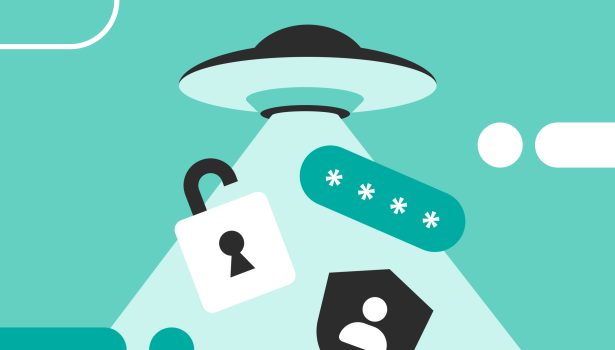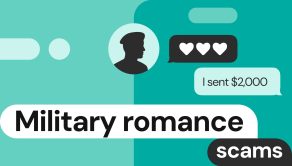Should I be worried if my information is on the dark web?

What to do if your information is on the dark web? You’re right to be worried about it. Data breaches happen daily, and a large portion of this stolen data surfaces on dark web websites, where it’s sold and bought as if it’s just another commodity.
But when your information is found on the dark web, it doesn’t mean your identity has already been stolen. Yes, you’re at risk, but taking prompt action should protect you from any malicious exploits of your data.
Does finding your information on the dark web mean you’re in danger?
Yes, finding your personal information on the dark web is often linked to risks of identity theft, compromised accounts, and targeted scams. When you get a dark web alert, it signals your personal information might be in the wrong hands. The more sensitive this information is, the more dangerous it is to have it exposed, on the dark web and elsewhere. However, this only becomes a real threat when you don’t take any corrective action.
As a rule, personal data ends up on the dark web through data breaches and leaks. For example, in 2023, an API vulnerability led to the exposure of emails and phone numbers of over 200 million Twitter (now X) users. This data was later posted on a hacker forum. In 2024, the infamous Ticketmaster data breach exposed emails, phone numbers, encrypted financial information, and more—all in all, 560 million customer records. Have these records been exploited? Hard to tell, but Ticketmaster did offer their affected customers a free 12-month identity monitoring service just in case.
What are the risks of your information found on the dark web?
What happens if your information is on the dark web? First, it gets exposed to cybercriminals who might use it for fraud and scams. Once bought or obtained otherwise, this personal information can be exploited, potentially affecting your reputation, privacy and financial security.
Here are some common scenarios of how personal data leaked to the dark web can be used for malicious purposes.
Identity theft and financial fraud
If your name, address, Social Security number and/or national ID are found on the dark web, chances are they can be exploited to steal your identity.
Financial fraud is the number-one way stolen data is used in identity theft cases. According to the 2025 Identity Fraud Report by Entrust, fraudsters typically focus on the top 3 industries: cryptocurrency, lending and traditional banking.
National IDs, driving licenses, tax IDs and credit card information are all high-risk types of personal data. Once leaked and put on sale on the dark web, this data can lead to a range of fraudulent exploits:
- Opening a credit card or taking a loan in your name
- Filing fake tax returns to claim refunds
- Claiming government benefits
- Draining your bank accounts
- Linking your bank account to money laundering operations
- Getting medical treatment or prescriptions in your name, known as medical identity theft
- Filing fake insurance claims
If fraud is successful, the consequences can include lost funds, a ruined credit score, debt collectors chasing you, time wasted disputing fraudulent transactions and, ultimately, having to prove your innocence in criminal cases.
Account takeovers and password leaks
Our credentials are the most essential of all the digital information we share online, and they are also the most vulnerable to exploitation. If your email, passwords, or their combinations are found on the dark web, they can be enough for cybercriminals to take over your online accounts.
The common practice of reusing passwords across websites raises the risk of credential stuffing, where a single compromised password can lead to multiple account takeovers. Don’t make it easier for hackers to exploit your information—set up only unique, strong passwords for each service you use, enhanced with multi-factor authentication via a specialized app, not your phone number.
Targeted phishing and scams
Knowing your name, physical and email addresses, phone number, and other sensitive personal information like the bank or the subscription service you’re using is enough to set up highly convincing scam traps. If you find any of these details have been made public on the dark web, it’s a prime sign that you might become a victim of a targeted phishing email or a personalized scam scheme.
When enriched with your personal details, these targeted messages can be highly believable. For example, you might get an email from the Netflix security team notifying you about a suspicious login attempt in your location. The email will, of course, urge you to click the link to reset your password in case it wasn’t you. Once you click on the disguised phishing link in the email, it can trigger a credential theft, malware or spyware installation on your device, or the harvesting of more identity details about you for future fraud.
What should you do if your information is found on the dark web?
If your information has been found on the dark web, whether through dark web monitoring or otherwise, you should act as quickly as possible. Some data breaches only become known weeks or months after they happen, giving cybercriminals ample time to exploit affected data records. So the first essential step to mitigate the consequences of your data breach is to act fast.
Second, don’t waste your time trying to remove your data from the dark web. No alert will tell you how long your data has been out there. It’s also impossible to tell if it’s already been purchased with malicious intent. So, head straight into securing your existing accounts, notifying relevant services and authorities, and setting up 24/7 identity monitoring to curb any attempts to use your data against you.
Here are some more recommended remediation steps in detail:
Map your digital footprint
Not all personal information is equally valuable. To know where to focus your remediation efforts, think like a hacker and ask yourself: where would you use this stolen data?
For example, if your email has been compromised, list all the accounts and digital services where you use this email. Prioritize information and accounts linked to your money, identity, and communication. Those where you have saved any payment details and additional personal information are the ones that need to be secured first.
Get assistance from authorized services
If your financial, medical, or work-related sensitive information was exposed, involving a human element can be the fastest way to mitigate the risks:
- Contact your bank’s fraud department: they can start monitoring your account for suspicious activity, update your security questions, help you open a new account or issue a new card, and block unauthorized transactions.
- Contact credit bureaus to freeze your credit: this will make it impossible for fraudsters to open new credit accounts in your name.
- Notify your health insurer or benefits provider: they can flag medical identity fraud attempts, issue a new insurance card, and monitor your account for suspicious claims.
- Notify your employer’s HR or IT department: many companies have dedicated security teams monitoring anything suspicious within their network, but it helps to notify them of your compromised data preemptively. They will help you change your passwords, monitor the systems for unauthorized access attempts, and activate identity protection support if needed.
Change affected credentials
The easiest way to prevent hackers from exploiting your leaked credentials is to replace them altogether. You can go as far as creating a new email address and replacing your compromised passwords with new, strong combinations you don’t use more than once. Enable two- or multi-factor authentication not tied to your phone number in case it’s compromised too.
Create an email ‘tripwire’
If you’re anxious about your data security, you can test it by setting up a sort of tripwire with a new unique email address. Subscribe to random services with it that you don’t intend on using and wait. If you start seeing suspicious emails like spam and password reset requests, it could be a sign of either your data leaking again or your devices being monitored.
Subscribe to an identity protection service
Instead of monitoring for signs of identity theft yourself, delegate it to an automated service with human resolution support available. Some dark web monitoring tools are part of broader identity protection packages that can include up to $1 million in identity theft insurance, credit and home title monitoring along with a range of security tools for password management, antivirus protection, and safe browsing.
Remove your data from data broker sites
Data brokers scrape personal information about people available online and then put it together for sale or just post it online to monetize the traffic. While they benefit from it (without your consent), your public data can be exploited to piece together your identity or target you with a personalized scam.
Use data-removing services like Onerep to make sure no personal information about you can be googled or found freely on unauthorized websites.
Ditch oversharing online
If you got burned with your personal data appearing on the dark web, consider it a lesson in data privacy. You can start a kind of “invisibility campaign” in response, taking action to remove or stop sharing your personal information online:
- Remove your birthday and hometown from social media
- Switch your LinkedIn profile to private
- Stop tagging the location of your Instagram posts
- Delete old accounts you no longer use
- Never save payment details on shopping websites
If it looks like paranoia to you, know that these practices are increasingly becoming the standard of the 21st-century digital hygiene. The less you share about yourself online, the harder it is to exploit this data, and the safer your identity becomes.
FAQs
How to see if my information is on the dark web?
To detect your personal information leaked on the dark web, subscribe to a dark monitoring service, free or paid. These services scan the dark web for any matches of your personal information with stolen data records posted across darknet marketplaces, hacker forums, and data dumps, and notify you of your compromised personal details.
Can I remove my data from the dark web?
Removing your data from the dark web is nearly impossible. The dark web is ungoverned and unregulated, so no legislation applies to the black market trade happening there. The only way to avoid your info appearing on the dark web is to secure it proactively through identity protection services and privacy-first browsing habits.
What are dark web monitoring services, and are they useful?
Dark web monitoring services are automated tools that scan the dark web for traces of stolen personal information. They are indeed useful, as they show which details have been compromised, and in this way alert you so you can secure these details before it’s too late. However, these services can’t protect your data from potential exploits, nor can they remove your data from the dark web.





Dimitri is a tech entrepreneur and founder of Onerep, the first fully automated data removal service. Top cybersecurity CEO of 2021 by The Software Report.